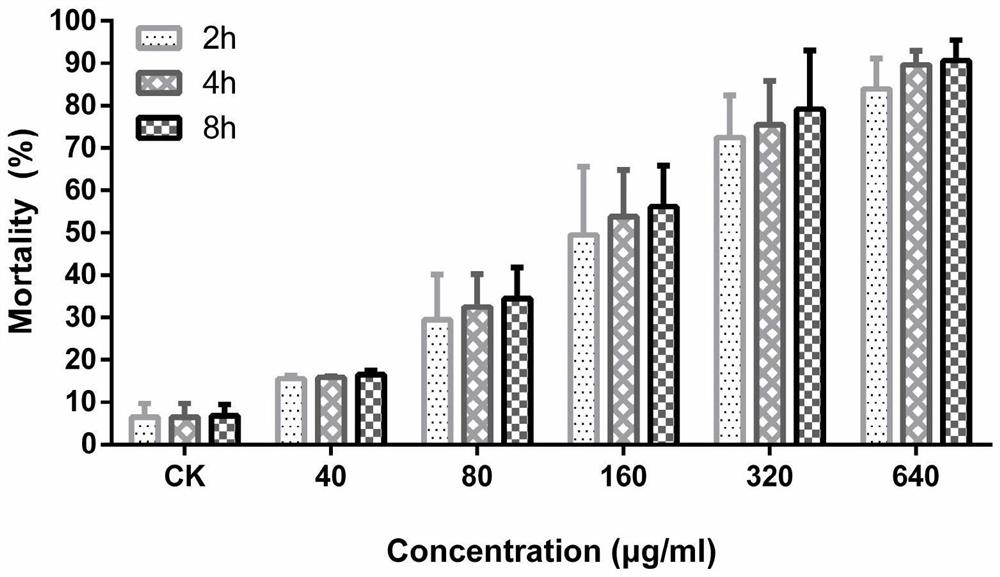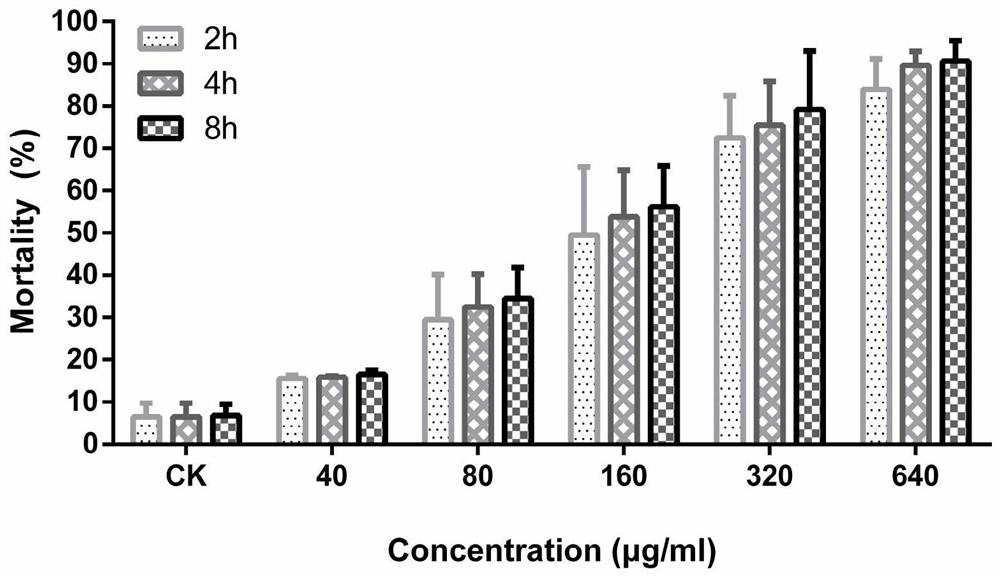Insecticidal genes of the d family of Pseudomonas annulus and their encoded mature peptides and their applications
A technology of quasi-annular leopard spider and insecticidal gene, applied in the fields of application, insecticide, genetic engineering, etc., can solve problems such as not being able to meet the selection requirements of insect-resistant genes, maximize protein production, optimize purification conditions, optimize The effect of inducing conditions
- Summary
- Abstract
- Description
- Claims
- Application Information
AI Technical Summary
Problems solved by technology
Method used
Image
Examples
Embodiment 1
[0041] Preparation of toxins
[0042] Design and construction of spider toxin gene
[0043] The planted loop spider from the water rice field in Pukou District, Nanjing, Jiangsu Province, and raised 90 days in indoor use of brown planthopper, taking poison gland and performing transcription group sequencing. According to the results of the annotation, screened the spider toxin gene, according to the half The number, arrangement, domain prediction and sequence analysis of cystine, obtaining a class of candidate genes of a class of jerkoplastrid, and one of them, i.e., PPTX-07, the base sequence such as SEQ ID NO. 1 showing the amino acid sequence encoding the protein, such as SEQ IDNO.6, predicts its signal peptide, forward peptide, and ripe peptide by spiderp (http: / / www.rachnoserver.org / spiderp.html), and mature the peptide The sequence is optimized in accordance with E. coli Codon preferences, and the PPTX-07 toxin gene sequence used to expressed in E. coli is designed such as S...
Embodiment 2
[0053] Using the design and construction method of the spider toxin gene in Example 1, the insecticidal gene SEQ ID NO. 2-4: PPTX-13, PPTX-28, PPTX-38, PPTX-28, PPTX-38, PPTX-39; The corresponding recombinant plasmid was constructed by the same method and expressed a large amount of expression, and the recombinant toxins encoded by different genes were purified.
[0054] The nucleotide sequence of the insecticide gene PPTX-07 of the joining leopard spider is SEQ ID NO.1, as follows:
[0055] atgatgtctttgaaaatgcaagcgatgttgttggttgtaggcttgattacattcatagcagttcacgctgaagaagatataagtgaaaccgtagaatcagaacgatcgtgcgctaaggaataccaaagatgtgattggaacaacaaaccctgttgcgataatatttcttgcgtgtgtagcttgataggaaccaactgtgaatgtaagaaaggtatcatacgtactataaaagactggttcagtggaaaa
[0056] The nucleotide sequence of the insecticide PPTX-13 of the joining leopard spider is SEQ ID NO.2, as follows:
[0057] atgatgagagcctcaactgtattcggattatgtgcaattgctgttttgctgcttacgatcccagacgtttctggtgaagatgagatcaattctcaaaatgctccagaagaacgtggatact...
PUM
 Login to View More
Login to View More Abstract
Description
Claims
Application Information
 Login to View More
Login to View More - R&D
- Intellectual Property
- Life Sciences
- Materials
- Tech Scout
- Unparalleled Data Quality
- Higher Quality Content
- 60% Fewer Hallucinations
Browse by: Latest US Patents, China's latest patents, Technical Efficacy Thesaurus, Application Domain, Technology Topic, Popular Technical Reports.
© 2025 PatSnap. All rights reserved.Legal|Privacy policy|Modern Slavery Act Transparency Statement|Sitemap|About US| Contact US: help@patsnap.com



